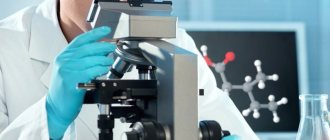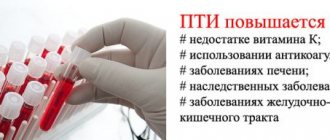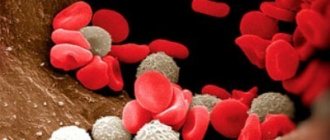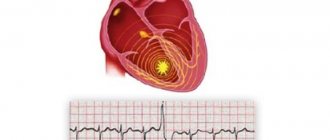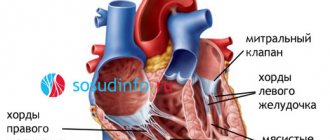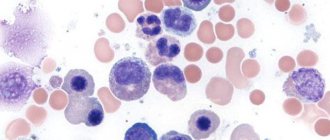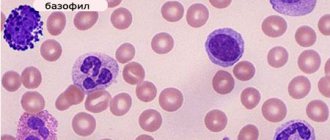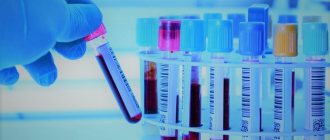Fibrinogen is a protein found in blood plasma that plays an important role in the blood clotting process. Fibrinogen levels in the blood can be detected using a blood test, which can also be used to find out the levels of other clotting agents in the blood. How does fibrinogen affect blood clotting?
Abnormally high or low levels of fibrinogen can reveal a wide range of medical conditions.
This protein is produced by the liver. When the body needs blood to clot, a reaction is created between fibrinogen and thrombin, turning fibrinogen into fibrin, a viscous substance that slowly creates a blood clot. Collapse can occur surprisingly quickly, especially at the site of minor trauma.
Some people are born with a condition known as afibrinogenaemia, which means they do not have enough fibrinogen. These people tend to bleed freely and heavily from wounds and are prone to bruising and internal bleeding.
Fibrinogen can also promote the formation of thrombosis, in which there are too many blood clots. Excessive blood clotting can cause strokes, heart attacks, and other health problems. It can also lead to disseminated intravascular coagulation (DIC), in which numerous small clots form throughout the body.
How to prepare for analysis
To obtain reliable results of a venous blood test for fibrinogen, adhere to the following rules:
- do not eat 8 hours before donating blood for analysis;
- remain calm and avoid physical activity at least 30 minutes before visiting the manipulation room;
- do not smoke for the previous 30 minutes.
Self-medication when blood counts deviate from the norm is prohibited . The doctor selects medications, including herbal ones, based on the test results and medical history. Otherwise, death is possible - both with high and low fibrinogen.
Let's consider the situation when fibrinogen is higher than normal: what it means and how to treat it. According to the international nomenclature, fibrinogen is the first factor of the blood coagulation system, synthesized by liver cells (hepatocytes). According to its chemical structure, it is a colorless protein soluble in blood plasma.
Fibrinogen analysis allows you to diagnose hereditary pathologies associated with disruption of the formation of blood clots, as well as liver diseases and infectious inflammation.
Therapy methods
High and low levels of fibrinogen are treated with different methods using certain tablets and injections, which can only be recommended by a doctor. Folk remedies can also be used as adjuvant therapy.
Often, to reduce the risk of thrombosis or bleeding, the doctor recommends that the patient undergo treatment in a hospital setting. If the increased or decreased level is expressed in minimal numbers, then treatment at home with an outpatient visit to a hematologist is possible.
An increased level of fibrinogen is always a high risk of blood clots. The treatment uses direct (heparin) or indirect (warfarin) anticoagulants in the form of an injection solution.
If a blood clot has already formed, thrombolytics are injected into it.
Patients with high fibrinogen levels are advised to review their diet and be sure to include:
- Cranberries.
- Licorice decoction.
- Linseed oil.
- Beetroot.
- Bitter chocolate.
- Fatty fish.
- Pineapples.
- Raspberry.
- Garlic.
- Cocoa.
These products help reduce the amount of fibrinogen, which means the risk of developing a blood clot will be minimal.
What is fibrinogen in a blood test?
After synthesis, the coagulation protein molecule enters the bloodstream, where it takes part in the formation of a thrombus (clot) when a vessel or tissue cells are damaged. The clot prevents further bleeding.
After launching a cascade of biochemical reactions, fibrinopeptide A and B are first cleaved from the fibrinogen molecule, which are converted into fibrin monomer, followed by polymerization into protein strands. Fibrin threads form an interwoven mesh - the basis for clot formation.
An analysis to determine the level of fibrinogen in blood serum is prescribed to patients when:
- the need for surgical intervention to assess the likelihood of bleeding or thrombosis;
- inflammatory diseases;
- prenatal diagnostics;
- high risk of thrombosis;
- hereditary coagulopathies;
- kidney disease;
- treatment with anticoagulants and angioplatelet agents;
- selection of therapy for chronic pathologies of the liver and cardiovascular system.
Functions of fibrinogen in the body
Protein serves as the basis for normal blood clotting. As for the problems that the substance solves, there are three main points:
- Formation of a blood clot. Coagulation is a multi-step process. It occurs in several phases. First, platelets rush to the site of injury. The formed cells then begin to cluster in one area.
Fibrinogen crowns the natural process and ensures sufficient strength of the platelet plug. Protein processing itself occurs in several stages. This is a difficult task.
- Breakdown of the blood clot. As soon as the need for increased coagulation decreases, the reverse processes begin. This occurs due to changes in the balance of substances and specific compounds.
Without such a phenomenon, there is a high probability of blood clots. This is very dangerous, since vascular blockage, ischemia and necrosis are possible. Otherwise death from complications.
- Activation of immune processes. Research shows that this is one of the key tasks of fibriogen. It increases the intensity of white blood cells. This, in turn, normalizes wound healing and enhances the regenerative abilities of the body.
These are the main functions of the protein fraction.
Fibrinogen levels during pregnancy by trimester
Normally, fibrinogen increases significantly during pregnancy. This is due to the need to prepare a woman’s body for childbirth, during which blood loss is inevitable.
Expert opinion
Smirnova Ekaterina Anatolevna
The doctor is a general category therapist. Work experience - 7 years. Annually improves qualifications within educational programs
During a physiological birth, the expectant mother loses about 300 ml of blood, and during a caesarean section this figure reaches 750 ml. In order to prevent excessive bleeding, the blood coagulation system is activated.
When interpreting the obtained data, it is necessary to take into account the gestational age, since the reference values for them are different. The table shows the maximum permissible indicators of the criterion under consideration.
| Gestation period, weeks | Normal values, g/l |
| 1 – 14 | 2,2 – 4,35 |
| 14 –20 | 2,85 – 5,28 |
| 210 – 30 | 3,1 – 5,68 |
| 30 – 35 | 3,1 – 5,73 |
| 35 – 42 | 3,3 – 6,2 |
The maximum increase in fibrinogen is typical for the third trimester during pregnancy, since the woman’s body activates all systems and organs in preparation for labor.
Reference values
When quantifying fibrinogen using a colorimetric method, the rate of coagulation factor I depends on the age of the person:
- in newborn infants – from 1.3 to 3.0 g/l;
- up to 14 years of age - from 1.2 to 3.9 g/l;
- in adult women and men – from 2.0 to 4.0 g/l.
During pregnancy, the female body prepares for labor, during which uterine bleeding may occur - coagulation factors, including fibrinogen, intensively accumulate in the circulating blood. The level of fibrinogen in the blood of a woman carrying a child varies depending on the gestational age:
Blood for ACE
- up to 13 obstetric weeks – from 2.1 to 4.3 g/l;
- from 14 to 20 – from 2.8 to 5.2;
- from 21 to 28 – from 3.0 to 5.5;
- from 29 to 34 – from 3.2 to 5.8;
- from 35 to 40 – from 3.4 to 6.5.
A low level of fibrinogen (less than 2.0 g/l) increases the risk of birth hemorrhage; its norm in women’s blood during pregnancy can reach 7.0 g/l. For a practically healthy person, a high level of fibrinogen is not a determining indicator when assessing the risk of cardiovascular diseases. However, an increase in the concentration of this glycoprotein by 1.0 g/l is the reason for a comprehensive examination of patients who have crossed the 50-year mark - this is the age category that is at risk for the development of dangerous pathological processes.
Fibrinogen is higher than normal - what does this mean in an adult?
The first coagulation factor is classified as a protein in the acute phase of inflammation. Therefore, high fibrinogen in the blood is recorded during an infectious lesion of the human body, as well as during tissue destruction.
A one-time deviation from the norm can be caused by physiological reasons or improper preparation of the patient for the delivery of biomaterial. The disadvantage of the method is a wide range of possible pathologies in which the level of fibrinogen in the blood serum exceeds the norm.
In addition to the inflammatory process, fibrinogen above normal is observed with:
- the presence of malignant neoplasms with metastases;
- extensive burns;
- insufficient synthesis of thyroid hormones;
- viral or bacterial infection - influenza, tuberculosis, pneumonia;
- heart pathologies (heart attack, stroke);
- taking medications based on female sex hormones, including oral contraceptives;
- amyloidosis – disruptions in the processes of protein metabolism, as a result of which a protein-polysaccharide complex is deposited in the tissues.
Causes of low fibrinogen
Reasons why fibrinogen may be low in a blood test:
- Hypofibrinogenemia and afibrinogenemia. As a result of genetic pathologies, the concentration of the glycoprotein decreases or the protein is completely absent from the blood;
- Hypo-, dis_, afibrinogenemia, thrombohemorrhagic syndrome occurs against the background of fibrinogen deficiency due to disorders in the blood coagulation system;
- Different variants of DIC syndrome (a blood clotting disorder in which blood clots form in small vessels);
- Condition after heavy blood loss;
- Pregnancy pathologies (late toxicosis, rapid or complicated labor, cesarean section);
- Functional liver failure in acute or chronic form, serious damage to the liver parenchyma (after all, only liver cells produce fibrinogen);
- Damage to hepatocytes (liver cells) by hepatotropic toxic substances (industrial poisons that primarily damage the liver);
- Thrombolytic therapy is a procedure that dissolves a blood clot in an important blood vessel and restores blood circulation to the affected area;
- Inflammation of the lining of the brain of bacterial origin;
- Prostate cancer at the stage of metastasis;
- Secondary foci of malignant tumor growth in the bone marrow;
- Taking aspariginase. L-aspariginase (an enzyme of the hydrolase class) accelerates the breakdown of asparagine (an amino acid) and reduces its concentration in leukemic tumor cells;
- Tumor diseases of hematopoietic and lymphatic tissue (myeloid leukemia, Vaquez disease);
- Deficiency of cyanocobalamin and ascorbic acid;
- Taking androgenic, antibacterial, anabolic drugs, drugs based on phenobarbital and fish oil.
The amount of fibrinogen decreases due to various diseases and conditions.
The indicator value is below normal
A deviation of the criterion downward from normal indicators is no less important diagnostic value than an increase. Fibrinogen is low - what does this mean?
Before identifying the causes of the decline, it is necessary to exclude factors that do not relate to pathological conditions. Thus, protein may be reduced as a result of a recent blood transfusion from a donor to a recipient, as well as as a result of taking steroid or sedative medications.
Pathological conditions that reduce fibrinogen levels:
- DIC syndrome is a disruption in the implementation of blood clotting mechanisms, which is the result of an excessive release of thromboplastic molecules from damaged tissues. Observed in conditions of shock, extensive trauma, bacterial or viral sepsis, as well as complications during childbirth;
- chronic liver diseases – cirrhosis, hepatitis;
- hypofunction of vitamins C B12;
- the entry of amniotic fluid into the mother’s bloodstream, which leads to the development of shock, even death;
- chronic myeloid leukemia is a malignant lesion of the hematopoietic system;
- Vaquez disease is a benign pathology that leads to an excess of red and white blood cells;
- intoxication with snake venoms.
Fibrinogen is below normal - what does this mean?
Taking into account the fact that fibrinogen is a constituent substance in the blood, the content of which determines the rate of cessation of bleeding, when it is reduced, there is a high risk of massive blood loss even with the slightest damage. If, according to the results of the study, fibrinogen is reduced, the reasons may be:
- recent heavy blood loss;
- liver dysfunction (including cirrhosis);
- deficiency of vitamins C, B12;
- poisoning;
- intravascular coagulation syndrome;
- toxicosis of pregnant women;
- malignant blood diseases;
- congenital lack of fibrinogen (hypofibrinogenemia);
- polycythemia;
- heart failure;
- alcoholism;
- lack of animal proteins in the diet.
Fibrinogen is low - what to do?
When low fibrinogen is detected, it is recommended to begin identifying the causes and treatment immediately. In parallel with the treatment of the identified disease, which has provoked a decrease in this protein in the bloodstream, targeted drug therapy can be carried out to regulate the level of fibrinogen and prevent internal bleeding with the prescription of the following drugs:
- aminocaproic acid;
- Tranexam;
- Dicynone;
- Vikasol.
It is recommended that the nutritional diet of patients with reduced fibrinogen be enriched with the following products:
- lean meats;
- legumes;
- potatoes, spinach, cabbage, pumpkin;
- bananas, persimmons;
- buckwheat porridge;
- walnuts;
- eggs.
What are the dangers of fibrinogen deviations from the norm?
High values indicate thick blood, which significantly increases the risk of blood clots forming to clog blood vessels. In addition, a deviation from the norm indicates the development of a pathological process in the patient’s body.
In most cases, this is an infectious disease or tissue destruction. Conditions require clarification of the diagnosis; for this, the patient is prescribed additional examination methods, which include:
- determination of activated partial thromboplastin time (aPTT);
- antithrombin test;
- coagulogram with the obligatory establishment of prothrombin time and international normalized ratio.
A lack of protein leads to disruption of the blood clotting system, which can lead to extensive bleeding. Therefore, analysis is mandatory in preparation for surgery and during pregnancy.
Causes of elevated fibrinogen
If the concentration of the glycoprotein increases, this indicates that the blood coagulation system is activated and the likelihood of blood clots increases. In addition, increased fibrinogen indicates an acute inflammatory process in the body. Fibrinogen can be elevated in the blood in dangerous pathologies that affect important organs and systems:
- Inflammatory reactions, infectious diseases, malignant tumors that affect the respiratory system (pneumonia of various origins, tuberculosis, bronchogenic cancer);
- Kidney diseases with acute or chronic course (inflammation of the renal pelvis, glomerular nephritis, nephrotic syndrome, etc.);
- Diffuse connective tissue diseases (rheumatoid arthritis, scleroderma);
- Radiation sickness;
- Tumor-like formations, for example, bronchogenic carcinoma;
- Inflammatory disease of the liver or peritoneum in acute form (peritonitis).
In addition, an increase in fibinogen concentration provokes atherosclerosis and diabetes mellitus. Protein levels increase to 6 g/l in patients with nicotine addiction, obesity and the elderly.
An increase in the amount of glycoprotein is observed during an inflammatory or necrotic process. Fever, stroke, myocardial infarction (acute period), trauma, burns, and major operations can increase fibrinogen levels. This laboratory test is not specific for rheumatic diseases. The test is prescribed to assess the state of the coagulation and cardiovascular systems, as well as to detect acute inflammation (with a comprehensive study).
As mentioned earlier, fibrinogen levels increase after taking medications. These may be drugs that are used in gynecology to treat the negative symptoms of menopause or to prevent unplanned pregnancy (combined estrogen drugs, oral contraceptives). As a result of uncontrolled use of these medications, fibrinogen levels increase and thrombosis occurs. Therefore, before using any medicine, you should consult your doctor.
Preparing and conducting analysis
The biomaterial for the study is serum obtained after centrifugation of venous blood taken from the patient’s elbow. The study can be completed in private and public clinics.
Protein levels are determined using side-scatter detection with endpoint percentage determination. The period for obtaining results does not exceed 1 day, not counting the day the biomaterial is submitted.
The accuracy of the data obtained depends not only on the correctness of the analysis, but also on whether the patient was prepared for the test or not. The most reliable results are obtained if:
- blood is donated after an 8-12 hour overnight fast, you are allowed to drink unsweetened water without gas;
- for 1 day, spicy, fatty and smoked foods, as well as alcohol, are excluded from the diet;
- physical and emotional stress is limited within 1 hour, it is advisable to cancel sports training on the eve of submitting the biomaterial;
- By agreement with the doctor, taking medications is canceled 2-3 days in advance. If it is impossible to cancel, you should notify the laboratory employee about the medications you are taking.
- smoking is prohibited 30 minutes before;
How to take a fibrinogen test?
A couple of days before the test, you should stop drinking alcohol, fatty and hard-to-digest foods, excessive physical activity, overwork, and reduce the likelihood of stressful situations; half an hour before blood sampling, stop smoking. If there is a need to take any medications during this period, it is recommended to discuss the issue of their temporary withdrawal, since some pharmaceuticals can artificially affect blood clotting and fibrinogen production by the liver.
The essence of fibrinogen and its role for the body as a whole
Fibrinogen is a protein of the glycoprotein group, synthesized in the human liver. The normal level of its content in the blood is in the range of 2–4 g/l. This protein is the most important in the hemostasis mechanism and determines the possibility and speed of blood clotting when the wall of a blood vessel is damaged.
The main functions performed by fibrinogen:
- direct participation in the formation of a fibrin clot;
- having a direct impact on the rate of wound healing;
- regulation of fibrinolysis processes;
- participation in angiogenesis (synthesis of new vessels) and in cellular interaction;
- has an effect on the blood and artery walls during inflammatory processes in the body.
A deviation from the normal level of fibrinogen in the blood results in a number of unfavorable factors and an increased risk of developing certain diseases.
The clinical and diagnostic significance of the mass part of fibrinogen determines the following conditions:
- normal protein content;
- hyperfibrinogenemia;
- hypofibrinogenemia.
Hyperfibrinogenemia is characterized by an increased fibrinogen content, higher than 4 g/l. This condition leads to the risk of developing thrombosis of blood arterial vessels and the occurrence of heart attacks. The obtained data on increased content are prognostic for such conditions as: coronary disease, angina pectoris, survival after myocardial infarction.
That is, an increased level of protein indicates atherosclerotic processes and the development of stenoses.
Expert opinion
Smirnova Ekaterina Anatolevna
The doctor is a general category therapist. Work experience - 7 years. Annually improves qualifications within educational programs
At the physiological level, elevated levels of fibrinogen can occur during pregnancy, in conditions of a sharp and prolonged decrease in air temperature, and during menstruation.
Pathological reasons for an increase in the number can be such phenomena as infectious diseases, tissue necrosis, malignant formations, and oral contraceptives.
Hypofibrinogenemia, on the contrary, is expressed in insufficient levels of fibrinogen, less than 2 g/l. There are a number of reasons why protein deficiency is detected. Most often these are hereditary factors leading to its deficiency or severe decompensated liver diseases (viral hepatitis, cirrhosis).
The amount of fibrinogen less than 0.5–1 g/l poses a risk of bleeding of the vessels of internal organs.
The norms of mass fractions of fibrinogen, accepted by modern clinical studies in various people:
- adults (men and women): 2–4 g/l;
- pregnant women (maximum values for the third trimester): 6–7 g/l;
- in newborns: 1.25-3 g/l.
If the norms of this protein in adults, especially after 50 years, exceed the specified values by at least 1 g/l, this is an indicator for a more detailed examination. It is important to pay attention to the area of the cardiovascular system, since it is possible to narrow the lumen of arterial vessels, especially coronary ones, and there is a possibility of developing complete blockage with the subsequent development of myocardial infarction or cerebral infarction.
Reasons for the increase in the indicator. What is the danger?
- High levels of fibrinogen rise in the body under several conditions. One common case is an inflammatory reaction. Inflammation is the response the body makes when it is attacked by pathogens or subject to pain or irritation.
- Goal and Galen describe five cardinal signs of inflammation: pain, warmth, redness, swelling (swelling) and vocal cord function (loss/decreased function). Pain and redness are associated with increased blood flow to the affected area. As the body receives a signal that it has received a wound, the liver releases more fibrinogen to help stop bleeding. In the event of a pathogen attack, fibrinogen clots form around the cells of the invading pathogen, and signals from the blood (especially white blood cells) are sent to penetrate the pathogen and kill it.
- This increase in fibrinogen , that is, in the process of inflammation, is transient and normal. However, increases in normal fibrinogen levels also occur in cardiovascular disease. Increased fibrinogen levels should therefore be considered an indicator of increased risk of cardiovascular disease.
- Fibrinogen is a protein that plays a key role in the blood clotting process. Fibrinogen is a sticky, fibrous coagulant in the blood that appears to significantly increase the risk of one of the leading causes of death and disability, stroke.
- Analysis of the large-scale EUROSTROKE project (J Epidemiol Community Health 2002;56 (Suppl I:i14-i18)) showed that “fibrinogen is a powerful predictor of stroke” – including fatal and non-fatal strokes, first strokes, and hemorrhagic and ischemic strokes. strokes. By dividing populations into four groups (quartiles) based on their fibrinogen levels, the researchers calculated that the risk of stroke increased by almost 50% for each ascending quartile. Individuals whose fibrinogen levels were in the highest quartile were almost seven times more likely to have a hemorrhagic stroke. and they are more than twice as likely to die from a stroke.
- It is important to note that higher fibrinogen levels increase the risk of stroke independent of cardiovascular risk factors such as smoking and hypertension. However, high blood pressure and high fibrinogen levels have proven to be the most dangerous combination, increasing a person's risk of stroke even further. Each year, about 15 deaths occur in the United States. More than one quarter of people who suffer from a stroke are over the age of 65.
- A recent study measured baseline fibrinogen levels in more than 2000 men and women treated for preventive cardiology at a large urban hospital: About half of the patients had coronary artery disease (CAD). Acevedo M. and others (Am J Heart 2002; 143:277-82) found that patients with CAD tend to have higher fibrinogen levels than patients without the disease.
- Of the patients whose fibrinogen levels fell within the top two quartiles (>331 mg/dL), about 75% of men and 50% of women were diagnosed with clinical CAD. Previous history of heart attack in the CAD group was also associated with significantly higher mean fibrinogen levels.
- These results indicate that patients with CAD, especially those who have experienced a heart attack, often have higher levels of fibrinogen. But is the increase in fibrinogen levels an effect of this disease?
- To find out , the researchers further tracked the patients' health for an average of 24 months after their stay in the heart care unit.
They found that fibrinogen was a strong and significant independent predictor of causes of death in both men and women. The mortality rate is more than seven times higher in people with the highest levels of fibrinogen, compared to those with the lowest.
The mechanism of action of fibrinogen during the period of activity of the blood coagulation system
The mechanism of blood coagulation in humans is a complex process in which several interacting physicochemical and biological processes take part. Hemostasis (a set of body reactions aimed at stopping bleeding) is usually reflected in the following diagram:
- platelet activation due to vascular damage;
- platelet aggregation and adhesion (adhesion) to the damaged area;
- formation of a plug of platelets formed in the fibrin polymer network.
The direct participation of fibrinogen in the process of creating a plug and stopping bleeding is described by a proenzyme and enzyme cascade. The process itself is divided into three periods:
- activation period (transition of prothrombin to thrombin);
- the period of coagulation (clotting), during which fibrin is formed from fibrinogen;
- the period of formation of a clot of dense structure.
Conventionally, the whole process looks like this: after damage to the vessel (outside or inside), platelets are immediately activated, which rush to the damaged area. Next, platelets adhere to the connective tissue of the vessel, causing a large accumulation of platelets and the formation of aggregates that prevent blood from flowing out.
Enzyme reactions occur in parallel. The enzyme complex activates prothrombin and thrombin formation begins.
It is under the influence of thrombin and Ca+ ions that fibrin is formed from fibrinogen. A polymerization reaction occurs, resulting in the creation of a strong fibrous network that retains elementary blood particles.
At the final stage, it is from this reinforced network that a dense and insoluble fibrin clot, or thrombus, is created, which tightly closes the hole resulting from the damage.
Dozens of proteins are responsible for the hemostasis procedure; their action is based on the precise regulation of the blood clotting process.
In the entire described mechanism, fibrinogen plays a dominant role, while at the same time it affects the aggregation of platelets and leukocytes. The level of this protein in the blood affects its viscosity characteristics, that is, it can simultaneously change the physical parameters of the blood and have an effect on the walls of the vessel.
Fibrinogen - what is it?
After damage to the integrity of the vascular wall and hemorrhage, the function of fibrinogen is realized. As a result of injury, biochemical reactions occur, the action of which is aimed at eliminating the vascular defect and stopping bleeding. First, the blood vessel contracts (vasospasm), to enhance this reaction, a cold compress is applied to the damaged area. After this, platelets accumulate and stick together near the injured wall, forming a “white thrombus” (stages 1 and 2 of coagulation hemostasis).
If the damage is small, then this is enough, but if the integrity of a large vessel is damaged, the 3rd stage of blood coagulation begins. It manifests itself in the fact that fibrinogen under the influence of thrombin is converted into insoluble fibrin. Its threads form a strong mesh that holds back platelets and red blood cells. This type of thrombus is called red. After the formation of a red blood clot, bleeding stops and coagulation hemostasis is considered complete.
To prevent the blood clot from enlarging and blocking the lumen of the vessel, the anticoagulant (anti-clotting) blood system is activated. In addition, the functionality of the system to dissolve fibrin is realized. In this way, the body stops bleeding and prevents thrombosis.
Fibrinogen is produced by liver cells, after synthesis it enters the bloodstream, where it remains for 4 days, then the plasma protein is renewed. The body does not store fibrinogen, and special enzymes destroy unused protein.
The fibrinogen degradation product (FDP) is absorbed by monocytes and macrophages (white blood cells that cleanse the body of physical agents and foreign cells). After this, they secrete interleukin-6 (a protein that regulates immune and inflammatory reactions), which stimulates the production of new fibrinogen. This value is also revealed during analysis.
Thus, the function of fibrinogen is realized, which stimulates its own production. Therefore, the amount of destroyed and synthesized protein coincides, and its level in the bloodstream remains constant.
The relationship between fibrinogen and the likelihood of cardiovascular diseases
Despite the importance of this protein for hemostasis and the increased risk of internal bleeding or the difficulty of stopping it when its level is low, increased fibrinogen levels are associated with an increased likelihood of developing vascular stenosis. As a result, complex problems with arterial capacity can occur, leading to medical emergencies such as myocardial or cerebral infarction.
Conducted studies show that high levels of fibrinogen can not only be a consequence of any diseases, but act as a cause or component of a complex of causes in the development of certain diseases. It is known that during myocardial infarction, protein levels increase not only in the acute period, but also before the onset of blockage.
A blood test for lipid profile allows you to determine the concentration of lipoproteins in the blood: https://krasnayakrov.ru/analizy-krovi/lipidogramma.html
However, a normal level of fibrinogen in the blood cannot be a guarantee that a person will not have cardiovascular diagnoses. An increased protein content indicates atherosclerotic progression; in the case of myocardial infarction, especially transmural (large-focal) the survival rate decreases, as the bypass (collateral) blood flow near the infarction zone worsens.
It is well established that the size of necrotic changes in the myocardium during a heart attack is proportional to the value of fibrinogen content in the blood.
All preventive measures aimed at preventing vascular and heart diseases necessarily include monitoring fibrinogen levels and taking urgent measures in case of highly elevated levels.
Before performing surgical interventions, it is also necessary to control the content of the protein responsible for hemostasis.
The normal level of fibrinogen in the blood of women of different ages
Fibrinogen is a special protein produced by the liver. Once produced, it dissolves in the blood when exposed to enzymes, forming fibrin. As a result, in the presence of fibrinogen in the blood, the production of certain hormones such as progesterone, insulin, and fatty acids is stimulated. The concentration of protein in the blood increases due to the development of infectious diseases, various injuries, stress, inflammation, and normal levels depend on gender and age.
Normal indicators
Fibrinogen is a soluble protein that is involved in the formation of blood clots. Its elements in the blood are renewed every 3-5 days, and the protein is produced in the liver. The protein itself is inactive, but this lasts until there is a need for a blood clot to form.
It is at that moment that it is activated together with the blood coagulation system. This happens under the influence of thrombin protein. As a result of this interaction, insoluble thrombus threads or fibrin clots appear.
In the human body, fibrinogen performs the following roles:
- affects vascular walls during inflammation;
- increases the rate of healing of various skin injuries, disorders of the mucous membrane and internal organs;
- takes part in the formation of a blood clot;
- participates in the formation of new vessels and capillaries;
- regulates the dissolution of blood clots.
A blood test for fibrinogen content is not included in the standard test. It is carried out when it is necessary to prepare for various surgical operations, as well as after them, for pathologies of the blood vessels and heart, for liver diseases, during pregnancy, for suspected hemophilia, for the development of inflammation of unknown etiology.
It is worth noting that not all test results may be reliable, since they are influenced by the use of certain medications, blood transfusions, stress, high physical activity, excess weight, high concentrations of sugar and cholesterol, the use of medications with estrogen, or certain contraceptives. You should also not take a test to determine the volume of this protein in case of viral infections, runny nose, acute respiratory infections, sore throat, or influenza.
Normal fibrinogen concentrations in a woman’s body depend on age and health status. Thus, in a child, protein levels range from 1.5 to 3 g/l, in an adult sexually mature woman - from 2 to 4 g/l. Indicators change during pregnancy.
It is extremely important to constantly monitor the amount of protein in the blood, since if there is a shortage, serious bleeding can occur, which can lead to serious consequences, including death.
The fibrinogen content in the blood does not change after growing up. However, after 40 years, some health problems begin to appear, developing in connection with diseases, increased cholesterol and sugar, and therefore the rate of blood clotting increases.
Table of fibrinogen volumes in the blood of women.
| Newborns | Children | Adults |
| 1.3 – 3 g/l | 1.25 – 4 g/l | 2 – 4 g/l |
Women after 50 years begin to develop diseases that are associated with the formation of blood clots. Most often these are various strokes. For this reason, it is recommended to carry out at least two tests per year on the amount of fibrinogen in the blood. If the problem is confirmed, the doctor may prescribe blood thinners to the patient.
Starting from the age of 60, the risk of developing diseases associated with blood clots increases by another 2 times and continues to grow every 10 years. Irreversible changes occur in a woman’s body, which are also associated with an increase in blood clotting.
During pregnancy
The concentration of fibrinogen in the blood changes during pregnancy. This is a consequence of the development of a specific disease, or can be caused by natural causes. In any case, if the fibrinogen concentration deviates from the norm, the doctor should conduct a series of additional studies to identify the cause of the disorder.
Throughout pregnancy, a woman undergoes testing for the volume of fibrinogen in the blood three times, that is, once per trimester. However, in the presence of pathologies, the frequency of studies increases. Normally, the volume of protein in the blood of a pregnant woman during the 1st trimester is from 2.3 to 5 g/l, in the 2nd trimester the figure is from 2.4 to 5.1 g/l, in the 3rd trimester the figures can reach 6.2 g /l.
As the concentration of this protein in the blood increases, it becomes thicker and more blood clots appear. In this case, an insufficient amount of oxygen and nutrients will reach the embryo, resulting in problems with the development of the baby.
Changes in the concentration of fibrinogen in the blood can be caused by the use of drugs with estrogen. If a woman takes these medications, the concentration of protein in her blood increases. With any change in indicators, the doctor may suspect a malfunction of any organ or insufficient development of the fetus.
For natural reasons, the volume of fibrinogen in the blood decreases in a woman in a position with late toxicosis - preeclampsia. In this case, the doctor prescribes appropriate treatment for this problem, which will not harm either the mother or the baby.
In order to bring protein levels back to normal, you can use medications, as well as follow a diet rich in foods that can lower or increase protein concentrations. To increase protein concentration, you should eat more eggs, bananas, cabbage, cereals, potatoes, spinach, and buckwheat. To reduce fibrinogen levels, it is recommended to eat more beets, sea fish, cucumbers, raspberries, tomatoes, as well as drink cranberry juice and green tea.
It is worth remembering that self-medication is dangerous to health and you should definitely visit a doctor.
Increase or decrease in fibrinogen levels
An increase in the concentration of fibrinogen protein in the blood is caused by several reasons. Often these are various kinds of inflammatory processes that are characterized by tissue death. Protein concentration increases significantly during development:
- tuberculosis;
- flu;
- infections;
- inflammation;
- diabetes mellitus;
- nicotine addiction;
- strokes;
- myocardial infarction;
- amyloidosis;
- hypothyroidism;
- pneumonia;
- tumors;
- burns.
When diagnosing problems that cause an increase in fibrinogen, certain medications may be prescribed that stop the problem in two ways. In the first case, they block the effect of thrombin on this protein, and in the second, they slow down the production of the protein itself.
A decrease in protein concentration is observed when:
- hepatitis;
- cirrhosis;
- toxicosis;
- lack of vitamins;
- embolism;
- snake bites;
- taking anabolic hormones;
- consumption of fish oil.
To identify problems in a timely manner, recommended tests should be performed.
medickon.com
Some factors regulating protein levels
All aspects that influence fibrinogen levels are not known for certain. There are no drugs that can selectively reduce its concentration. However, there is a relationship showing that a decrease in blood lipid levels also reduces the amount of protein.
Low social conditions and constant nervousness can increase the concentration of this substance. This is often due to the fact that lipid metabolism in the body changes, on which the fibrinogen content depends.
Expert opinion
Smirnova Ekaterina Anatolevna
The doctor is a general category therapist. Work experience - 7 years. Annually improves qualifications within educational programs
It should be taken into account that all kinds of diets and other factors will not solve the problem of its balance in the blood, since the origins of concentration lie in hereditary and yet unexplored mechanisms responsible for synthesis.
Taking a blood test for fibrinogen should be carried out with traditional preparation, which excludes eating in the eight-hour period before drawing blood. The laboratory conducting the analysis must have a good reputation and experience in such studies.
It is advisable to carry out repeated tests to determine the dynamics. The completeness of the analysis is provided by a coagulogram, which reflects all the interacting factors involved in hemostasis, such as: prothrombin, prothrombin index, thrombin time, aPTT, etc.
Only in this case can a full conclusion be made about blood clotting.
Fibrinogen is an important plasma component responsible for blood clotting. When its amount increases or decreases, it can lead to problems in the functioning of the cardiovascular system and other internal organs. For each person, its content may change, for example, during pregnancy or other changes in the body.
Interpretation of biochemical blood test - table Is it useful to donate blood - where and how to do it What does a blood test for RW mean? Decoding a general blood test for a child Basophils in the blood are increased and decreased - reasons
Test to detect fibrinogen levels
A blood test for fibrinogen is called a coagulogram. It is made from citrated plasma obtained from a vein. Only 2 ml is enough for research.
The main indications for this study are:
- The period before surgery.
- Postoperative period.
- Diseases of the heart muscle and blood vessels.
- Liver diseases.
- Inflammation of unknown cause.
- Pregnancy.
- Hemophilia and suspicions of it.
What can influence the distortion of the final result? Indicators can be unreasonably elevated with obesity, prolonged intense exercise, high cholesterol and glucose, and when taking oral hormonal contraceptives.
Low levels may occur when taking certain drugs (anabolic steroids, phenobarbital, streptokinase, valproic acid) and with recent transfusion of blood and its components.
In order for the coagulogram to be correct, you cannot take this test during flu, colds, runny nose and sore throat.
Pregnancy level
In pregnant women, a number of changes occur in the body that affect the functioning of the circulatory system. From the moment of conception, low levels of fibrinogen are observed throughout the first trimester.
However, this is not a cause for concern; its norm in women during pregnancy may decrease, but only slightly. Most often this is due to toxicosis accompanied by dehydration.
When it passes, fibrinogen concentration returns to normal.
An increase in fibrinogen during pregnancy is dangerous for the health of both the woman and the fetus. In most cases, there is a risk of death of the child either in the womb or immediately after birth. Doctors warn about the following possible dangers of high protein in the blood when carrying a child:
fetal freezing;
Important! Usually, the symptoms of increased fibrinogen do not appear immediately, so during pregnancy it is necessary to regularly undergo a general blood test, biochemistry, testing for PTI, and others as prescribed by the doctor.
What does it mean if fibrinogen rises above normal?
It is impossible to unequivocally answer the question of why fibrinogen rose above the limits. There are many reasons for this increase. And only a hematologist or therapist can figure this out.
Often, an elevated fibrinogen content is detected in congenital anomalies or liver disease, since this protein is produced here, with a high risk of developing blood clots. This coagulogram indicator also increases when taking hormonal contraceptives. Therefore, this type of pregnancy protection is recommended for women no older than 35 years, when the risk of thrombosis is minimal.
An increase in fibrinogen is not always pathological. Sometimes this can characterize the physiological norm. This happens in women during menstruation or pregnancy. There is no threat to life here, and soon the indicator returns to normal.

